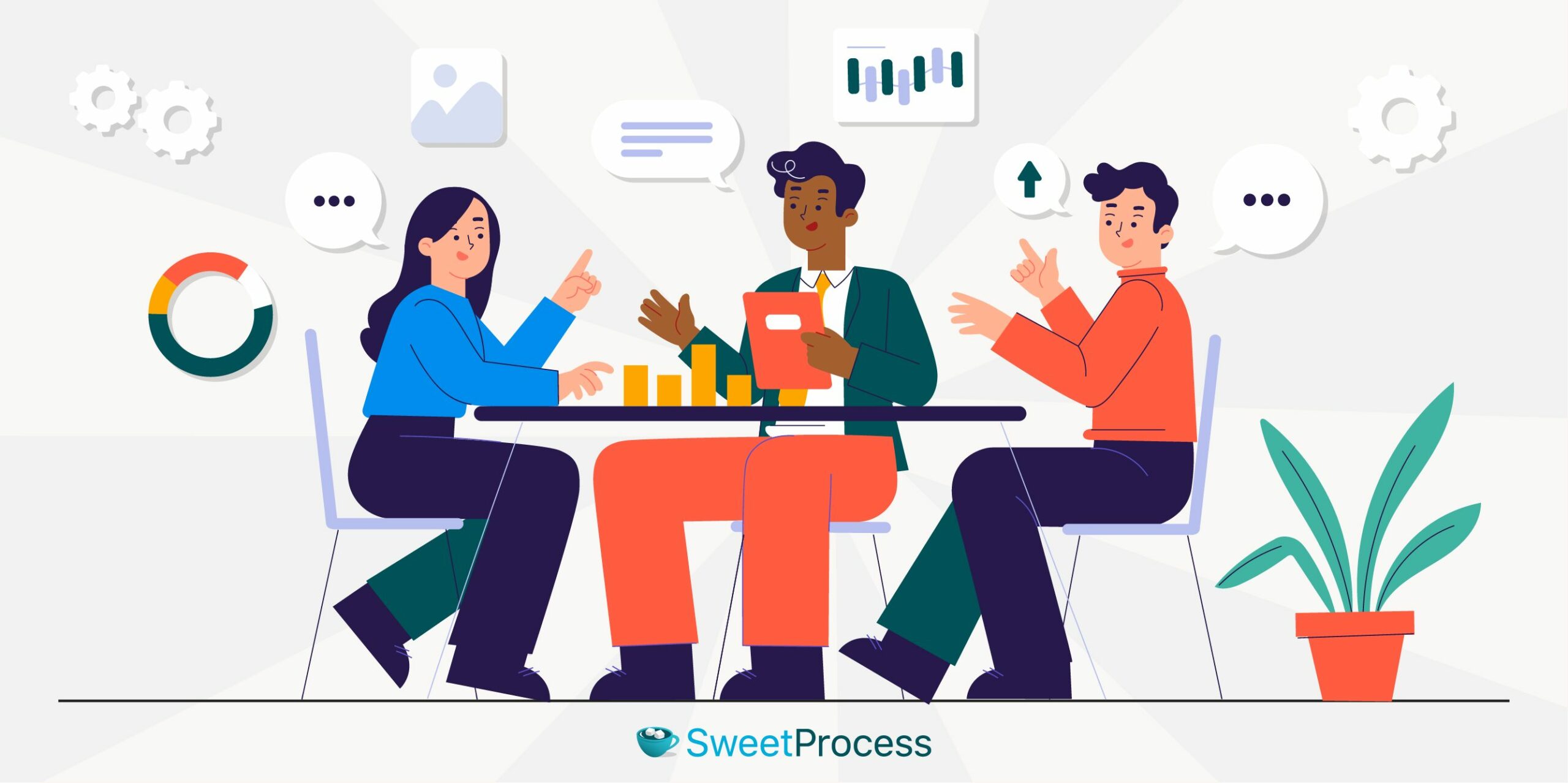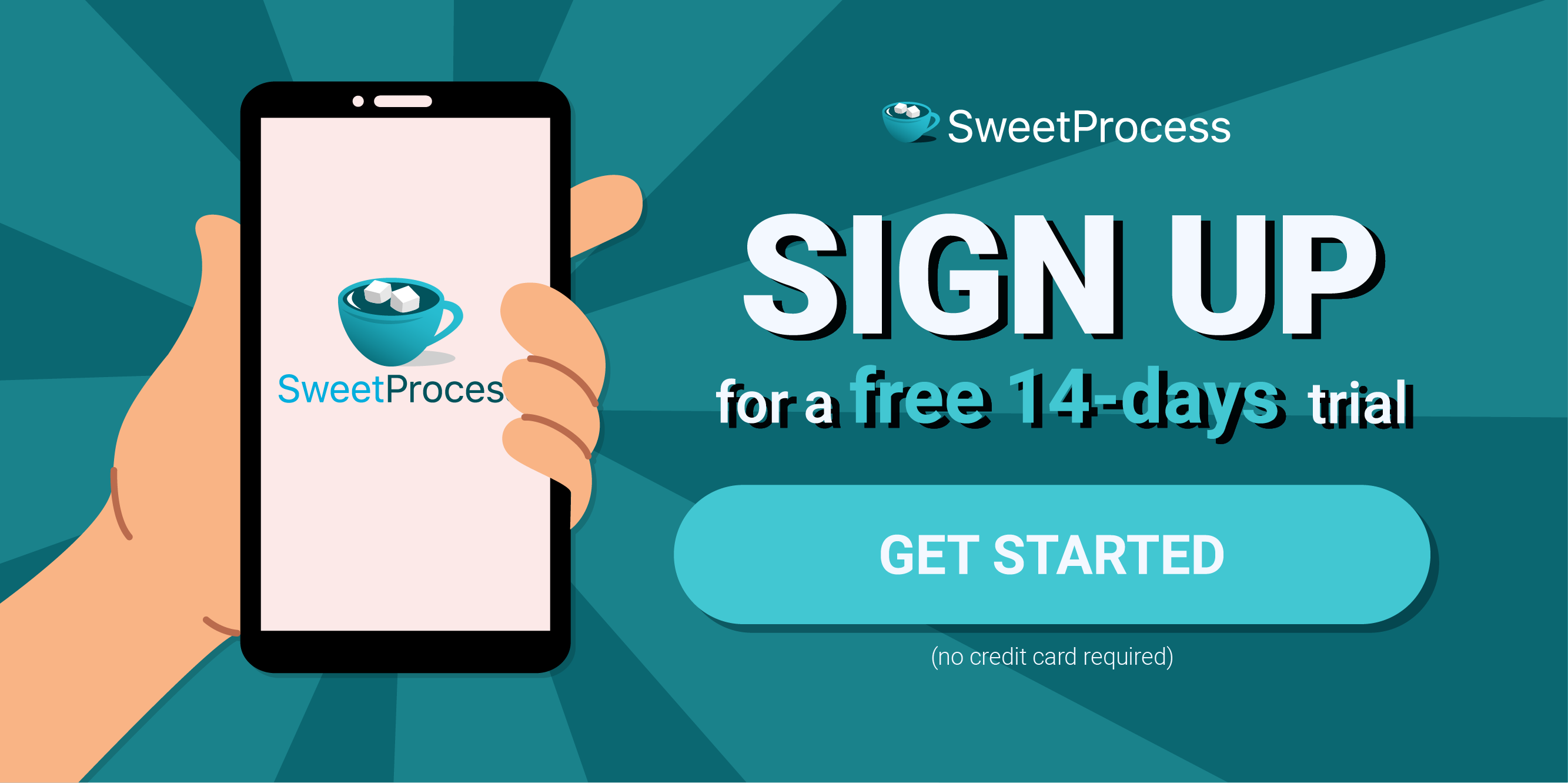Last Updated on October 18, 2025 by Owen McGab Enaohwo
![9 Key Steps for an Effective Decision Making Process [+Examples]](http://www.sweetprocess.com/wp-content/uploads/2024/03/decision-making-process.png)
Bad decisions are a significant reason why some of the biggest brands in the world went bankrupt. Businesses feel the impacts of such decisions as early as days after making them. Streaming companies’ subscribers have dropped drastically because of some changes they made to their content.
Losing years of hard work instantly over something avoidable is difficult for anyone. Effective decision making is a skill that can be mastered by following proven decision-making models and tools, but what exactly are they, and how can you implement them?
SweetPrcoess simplifies the decision making process by facilitating communication and collaboration among teams with standardized workflow management tools. Sign up for a 14-day free trial without a credit card.
Table of Contents
What Does the Decision Making Process Mean?
9 Key Steps For an Effective Decision Making Process
How to Build a Solid Decision-Making Process in Your Company Using SweetProcess
7 Decision Making Models You Can Use in Your Business
Tools For an Effective Decision-Making Process
Decision-Making Process in Business
Decision-Making Process in Consumer Behavior
Decision-Making Process in Healthcare
Decision-Making Process in Project Management
Types of Biases That Come Up in the Decision-Making Process (And How to Avoid Them)
Empower Your Employees to Make the Right Business Decisions Using SweetProcess
What Does the Decision Making Process Mean?

The decision making process simply means a systematic guideline for choosing an alternative between two or more options. It’s a part of everyday life that transcends into business. The success or failure of any business venture results from the strategic decisions taken about it. This places a great responsibility on decision makers to tread with caution.
Losses eventually lead to business failure. When an organization’s resources are drained to the bottom, there’s nothing left to sustain it. With the business environment ever-changing, one could argue that some losses are due to market volatility. Creating room for unforeseen circumstances is part of the decision-making process and allows you to navigate unfavorable outcomes.
Business executives and leaders face the daunting task of decision-making with limited resources. This pressure could lead to decision-making fatigue, a condition in which leaders are too exhausted to make the right decisions. The decision-making process streamlines the selection of reasonable options and identifies the most suitable alternative to prevent decision fatigue.
9 Key Steps For an Effective Decision Making Process

One of the mistakes organizations make is waiting until a problem arises before developing a solution for resolving it. Such a reactive approach addresses problems on a surface level, neglecting its root causes. Adopting a proactive strategy in decision making enhances operations management by positioning businesses to operate from a vantage point. Here are some steps for creating an effective decision making process.
Identify the Decision You Want to Make
Identifying the decision is pinpointing the problem the decision will solve. Failing to identify the problem may lead to distractions and mismanagement of resources. Ambiguous issues are costly to manage. Streamline the problem to the smallest possible units for clarity and use that to identify the decision to take.
Structure Your Team
Single-handedly making a business decision is a recipe for disaster, as there’s only so much you know and can see from your position. You are better off building a diverse team of people who will bring different inputs to the table. Outline the dynamics of the decision and select people experienced in it. Create room for newbies who can bring fresh perspectives that haven’t been explored, as those ideas could yield better results.
If your team handles complex operations or client processes, consider integrating business process outsourcing (BPO) software to streamline collaboration and task management. It helps unify communication, track performance, and ensure that every team member—whether experienced or new—can contribute effectively to your business goals.
Establish Your Approach
A lack of approach in the decision making process breeds conflict with opinions clashing. Organize the process by assigning roles and delegating responsibilities to team members. Outline specific areas you want people to focus on and outline the flow of information. This prevents employees from turning the decision-making process into a competition about whose opinion is adopted.
Gather Relevant Information From Internal and External Sources
Good business decisions are based on evidence. Your organization may have encountered such a situation or something similar in the past; how was it handled? If the result is good, consider implementing the same strategy, considering any differences. Seek a completely different approach if the previous outcome wasn’t good.
Consult external sources for information relating to a decision at hand. Resources such as market research, surveys, and case studies are very helpful. If you aren’t satisfied with your findings, engage consultants with expertise in that field for their professional input.
Promote Discussion and Debate
The decision-making process is flawed when there’s a consensus among team members too early. The goal is to find the best decision, not the most popular one. Create an environment for employees to air their views freely, even when those views aren’t popular. Having at least one person play the devil’s advocate is best. Great ideas will emerge from debating their views.
Determine Potential Solutions and Weigh the Evidence
Aim to have more than one decision option on the table and evaluate each one with evidence on the ground. Prevent sentiments by adopting standard frameworks such as SWOT analysis for the evaluation. Outlining the strengths, weaknesses, opportunities, and threats of each possible solution will reveal the best ones.
Build Closure and Alignment
Team members can disagree while communicating their different points of view, but they must agree in the end for collective success. People will directly or indirectly push back on decisions they don’t like. Enlighten your team on the importance of being on the same page and supporting the final decision. If they were part of the decision-making processes, it shouldn’t be difficult to make them see why the decision was the best among other alternatives. Reiterate the importance of putting the interest of the business above personal interests.
Implement Your Decision
There’s no guarantee that a decision will be successful until it proves itself. It takes the collective efforts of the entire team to actualize desired outcomes from chosen alternatives. This phase of the decision making process is action based. What do you need to do, and who is the best person for the job? This is an opportunity to promote team spirit by delegating activities to people based on their strengths, even if they weren’t in support of the decision initially. Create an implementation plan for the entire team to work with and hold team members accountable for their responsibilities.
Review Your Decision and Its Impact
A great way to know if you and your team made the right decision is to review your performance. The results of every business decision become visible over time. Establish a substantial time for review and critically evaluate the outcomes.
A focal point of the review is determining whether the decision solved the problem it was intended for. Focus on the problem being completely or significantly resolved, not partially. The decision failed if the problem still exists. Revisit the drawing board.
How to Build a Solid Decision-Making Process in Your Company Using SweetProcess
Team members are responsible for making decisions in the tasks they execute at work daily. The outcome of their decisions depends on how knowledgeable they are about said tasks. Organizations can increase employee efficiency by documenting standard operating procedures for tasks so they don’t need to make decisions for executing their duties regularly. To actualize such a proactive strategy, you need to leverage productivity tools like SweetProcess.
SweetProcess is a workflow management software for documenting business processes, procedures, and policies for higher efficiency. It facilitates collaboration in the decision making process and ensures that chosen alternatives are successfully executed.
Here are some of the core features of SweetProcess.
- Task management: Manage tasks from scratch to completion.
- Process maps: Create visual diagrams of processes to enhance decision making.
- Documentation: Document business processes, procedures, and policies seamlessly with new and existing templates.
- Automatic content creation: Create content automatically with artificial intelligence.
- Training: Train new and existing employees rapidly.
- Knowledge base: Build public and private knowledge bases accessible to teams remotely.
- Version history: Create and manage multiple versions of documents.
- Integration: Integrate more than 1,000 apps for increased productivity.
- Collaboration: Collaborate with team members in real time.
- Data reporting: Track work progress from reporting data in the dashboard.
How to Create Procedures in SweetProcess Manually
Click on “Procedures” and “Create Procedure.”


Enter your procedure title and click on “Continue.”

Click on the pencil icon beside the title.

Enter the procedure details in the content editor and click on “Finished Editing.”

How to Document a Procedure in SweetProcess Automatically With SweetAI
Click on “Procedures” and “Create Procedure.”


Enter the procedure title and click on “Write with SweetAI.”
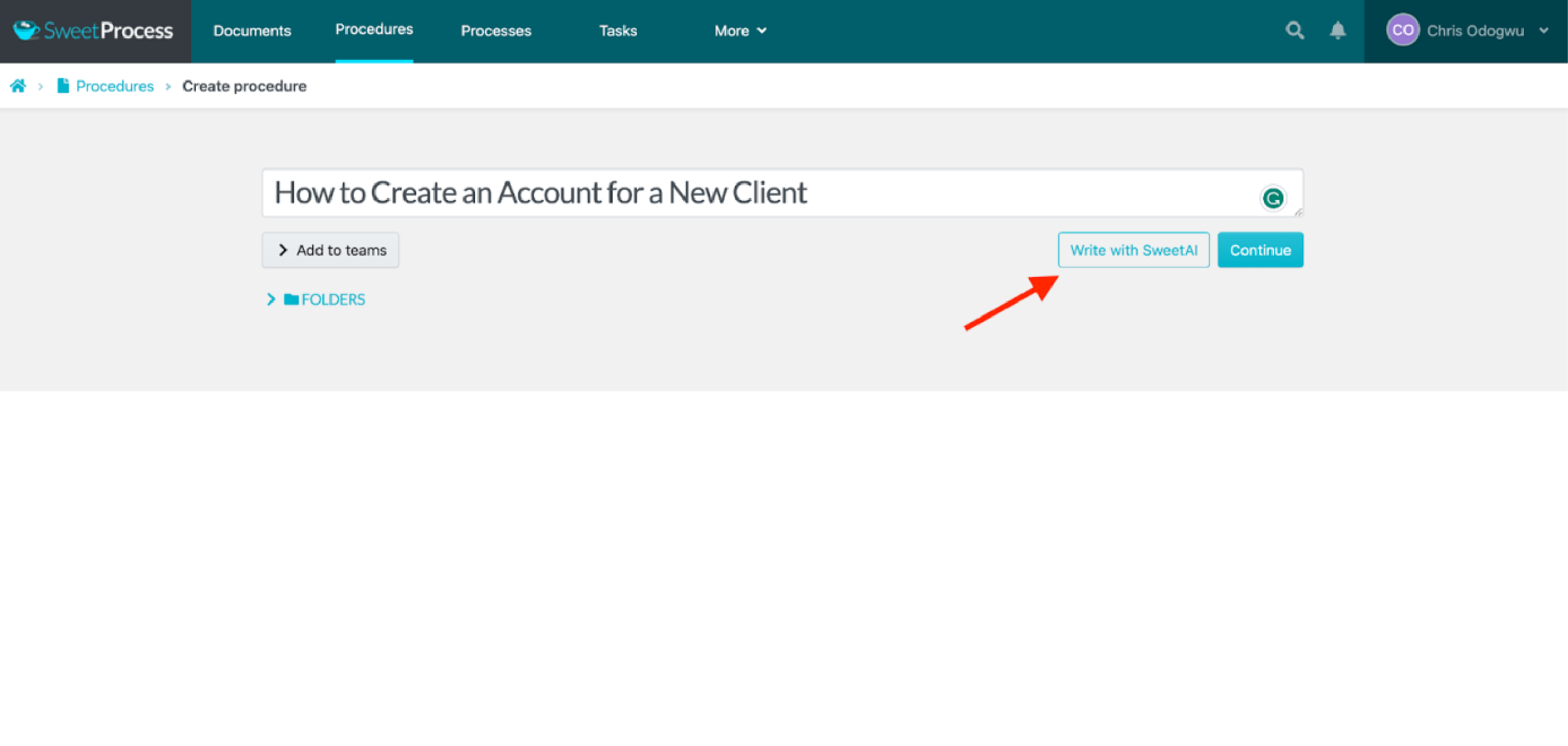
Wait while the system generates the content. It only takes a few seconds.
Click the pencil icon to edit the content.
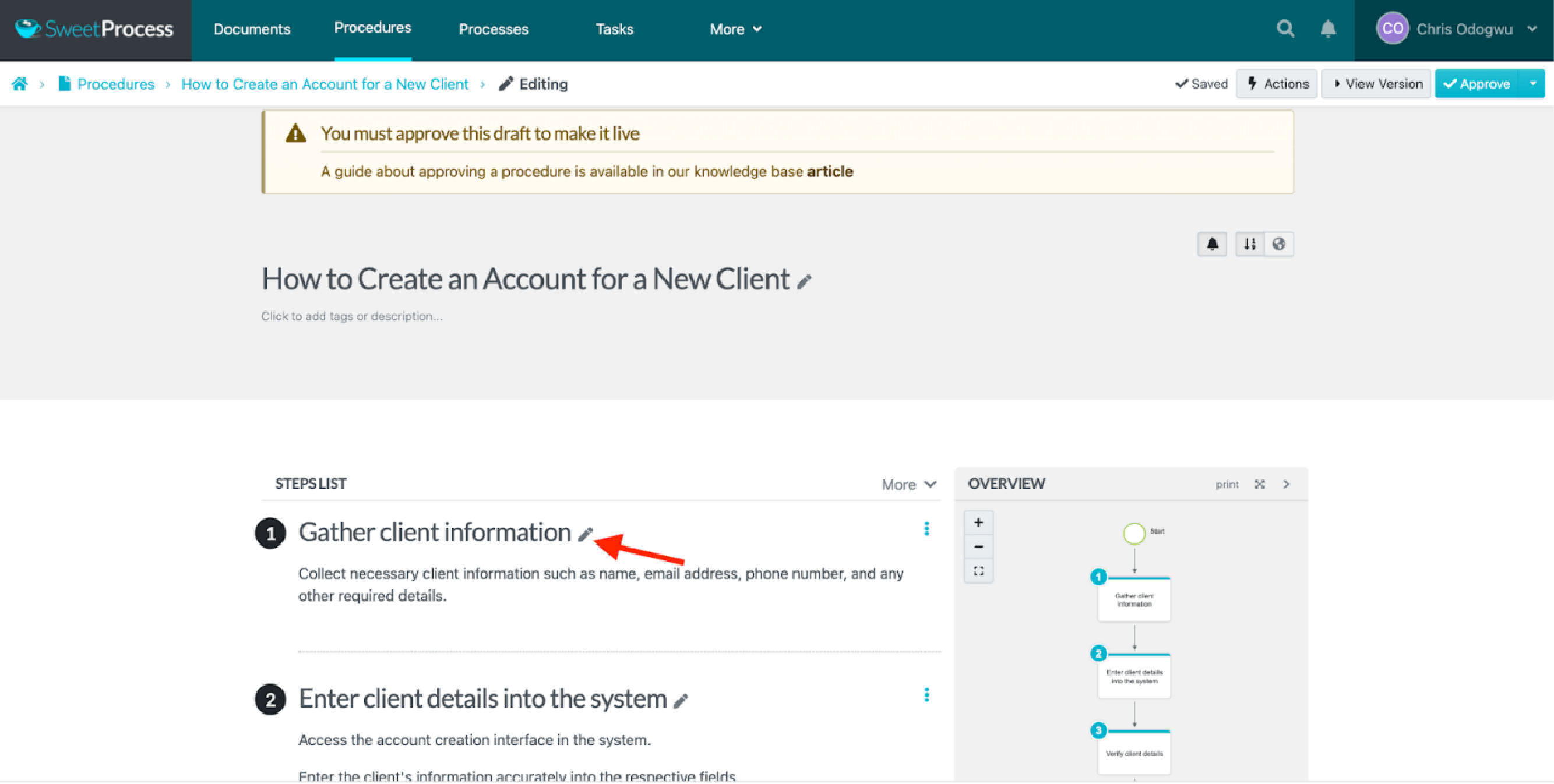
Click on “Approve” to publish the document.

How to Create Processes in SweetProcess
Click on “Processes” and “Create Process.”


Enter the process title and click on “Continue.”

Click on “Add Step.”

Click on “Procedure.”
Select the first task or procedure from the menu.

Click on “Add Step” and “Procedure” to add the next step in the process.


All the steps you added will show on the right. Click on “Approve” to publish the process.
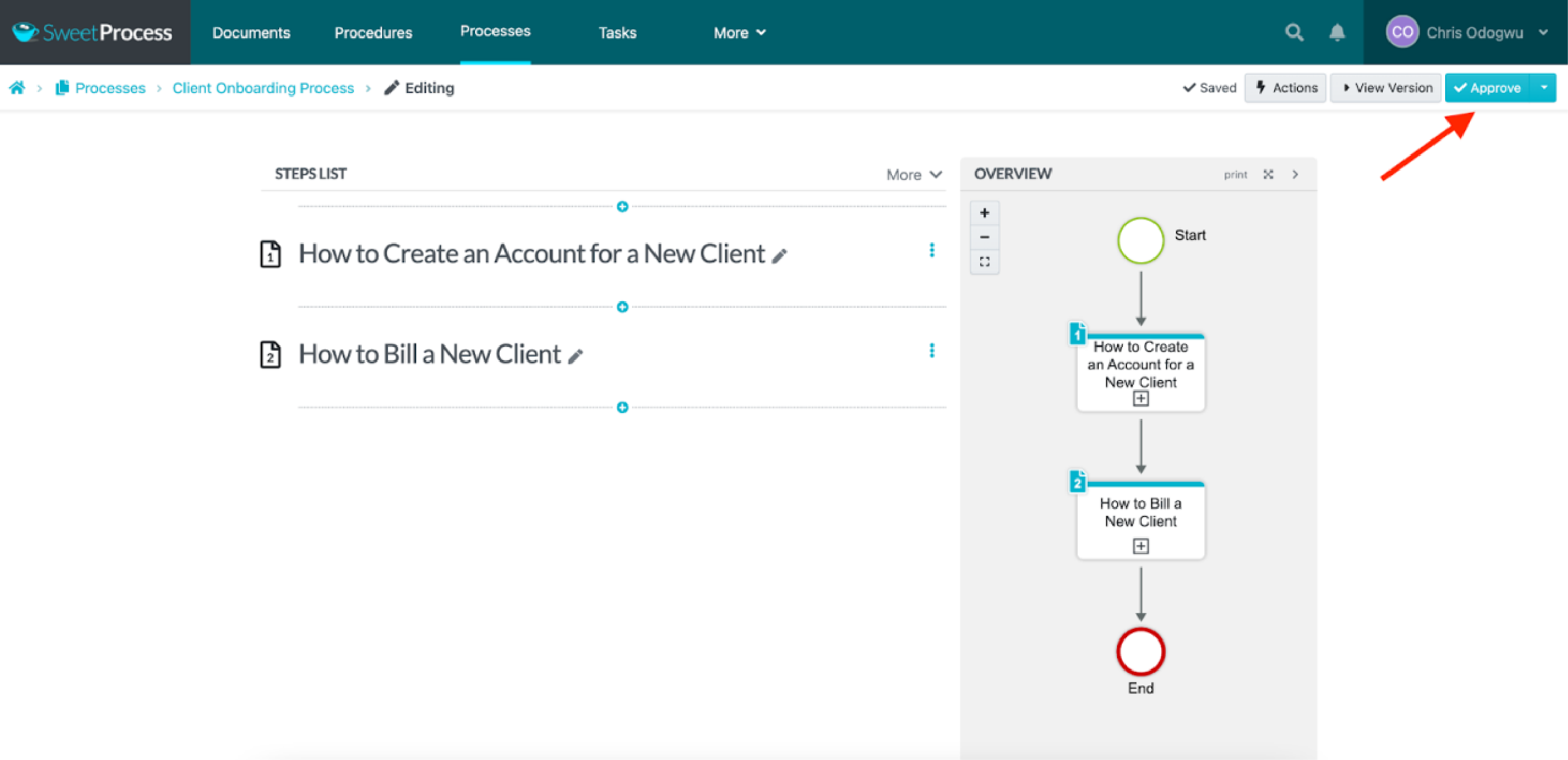
How to Create Business Policies in SweetProcess Manually
Click on “More.”
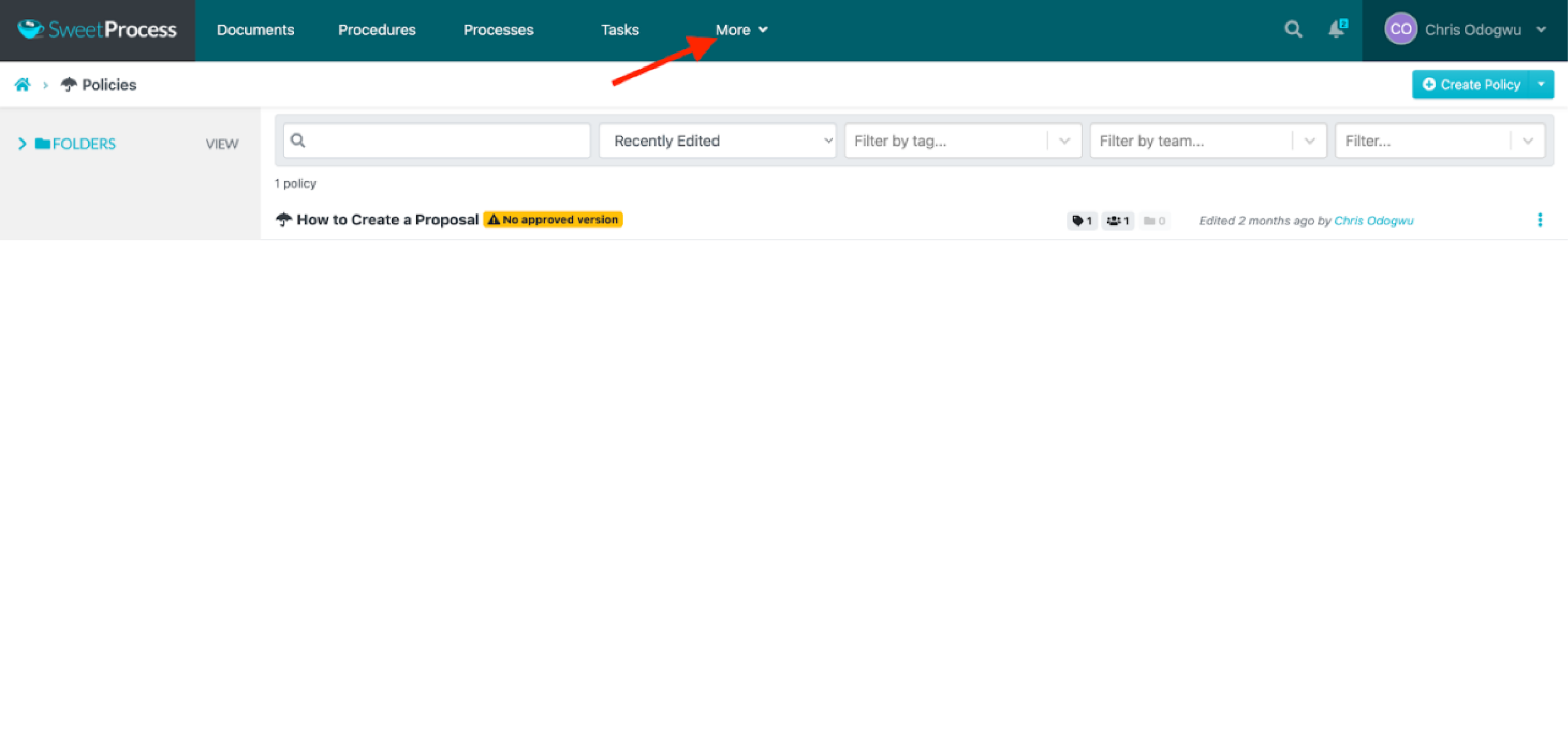
Select “Policies.”

Click on “Create Policy.”

Write the title of your policy and click on “Continue.”
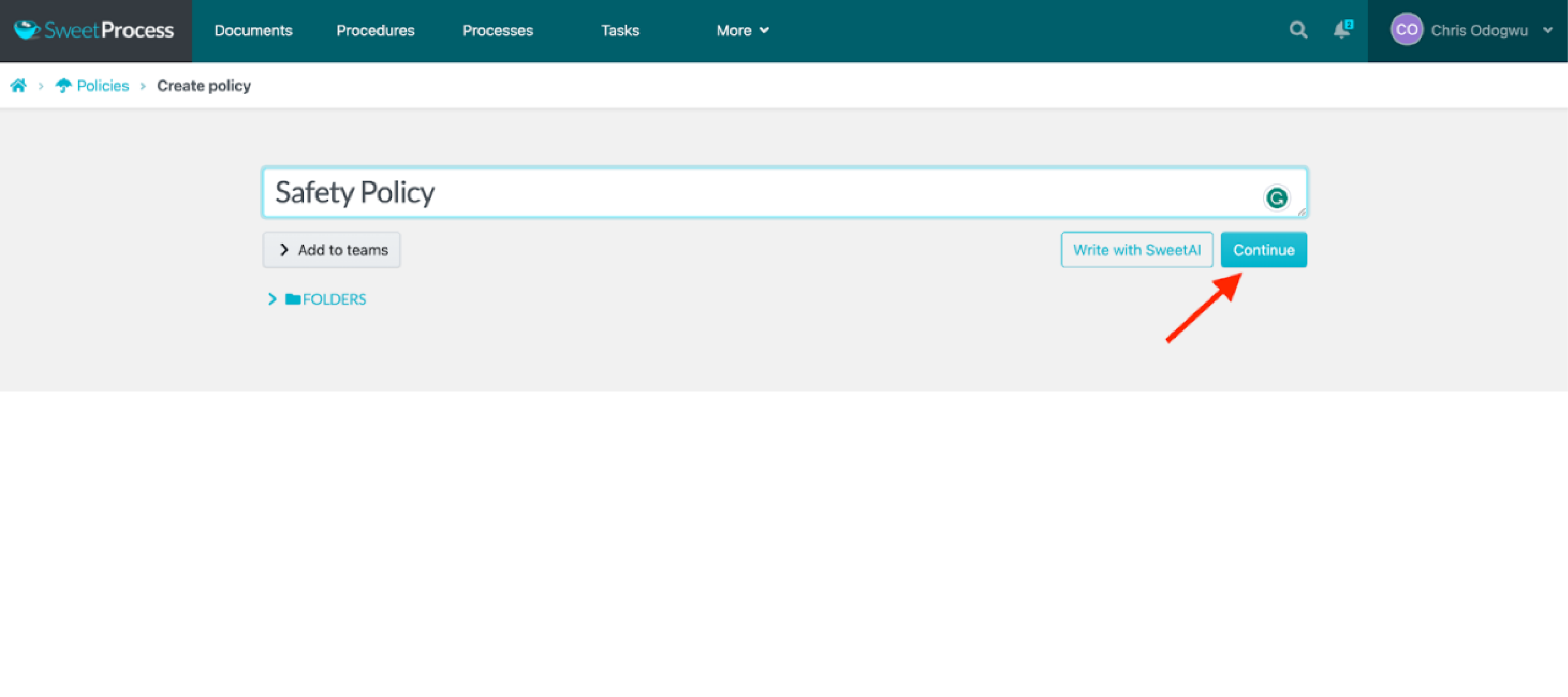
Click on the pencil icon to develop your policy.

Enter the details of your policy and click “Save changes.”

How to Create Business Policies Automatically in SweetProcess With SweetAI
Click on “More.”

Select “Policies” and click on “Create Policy.”
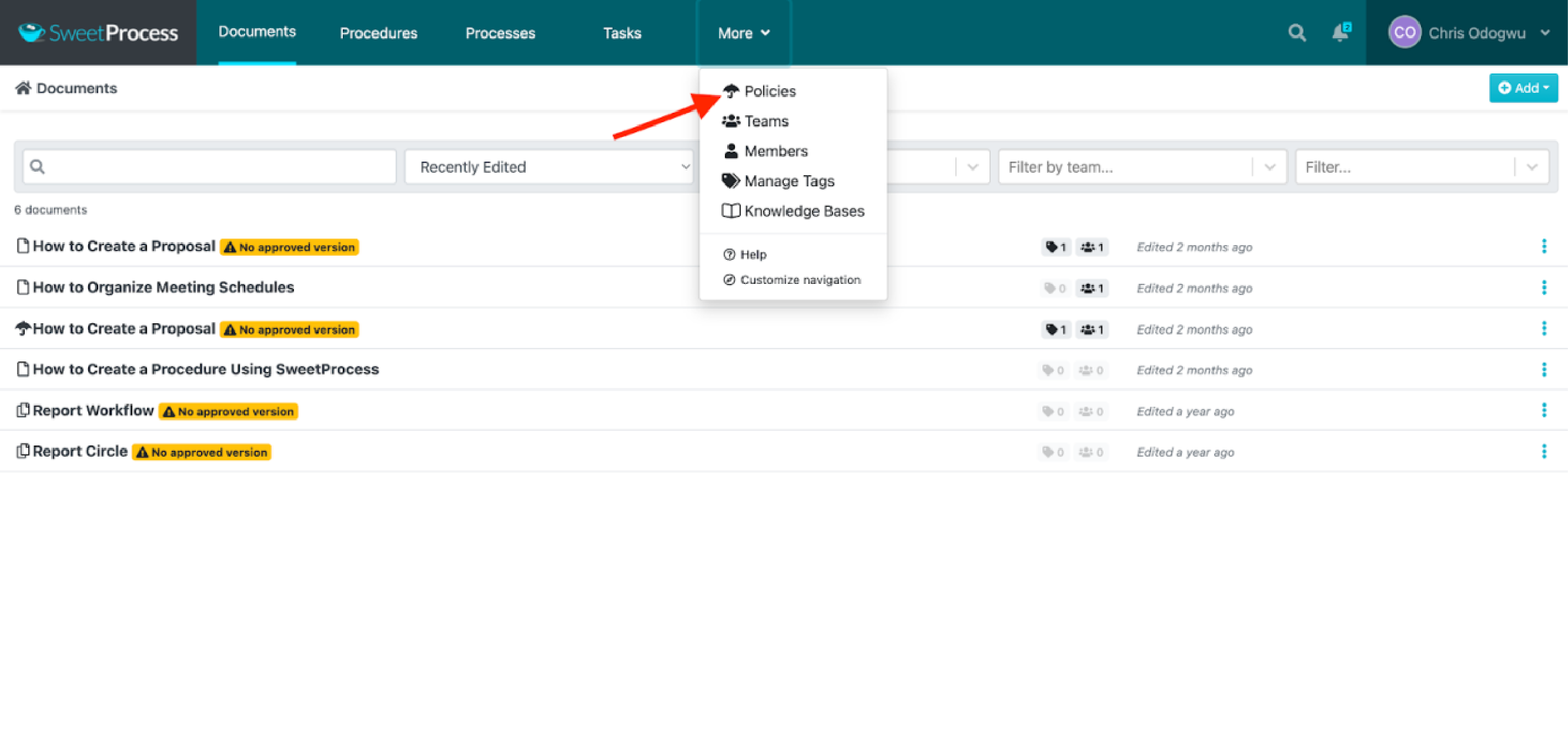
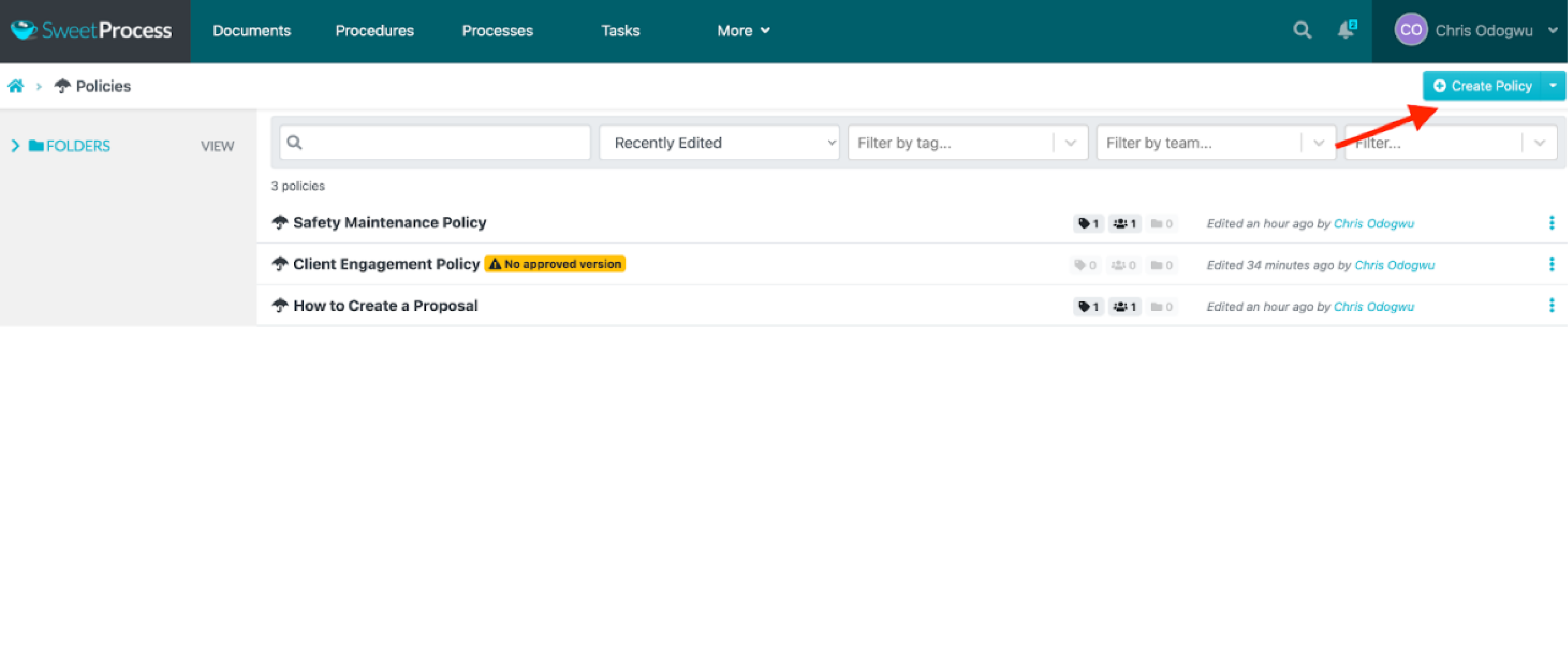
Enter the title of the policy and click on “Write with SweetAI.” The system will generate the policy in seconds.

SweetProcess is popular among businesses for streamlining operations and clarifying the decision-making process. Emma Mills, owner and founder of MiPa, a virtual assistant agency, understands that skilled employees are in a better position to make good decisions. She uses SweetProcess to train team members and confirm that they understand the training. “We onboard staff and team members quite regularly. The signing off, somebody actually signing their name to say, ‘Yeah, I’ve read this process. I understand and approve it…. We can see that they’ve fully understood and they’ve signed off that they’ve gone through these training modules,” Emma says.
Chris Dunning, founder and CEO at TechQuarters, a cloud solutions IT company, found that problems arise in business due to inadequate information. He uses SweetProcess to document his organization’s processes so he and his team will have the right information to execute tasks and make better decisions.
“What you find is that something will go wrong, and we look back then and one of the teams will say, could we add this to SweetProcess? Because if this had been done, I wouldn’t have had this problem further down the line, and each individual would look at it and go, ‘Oh yeah, great.’ And the next time around, problem solved, because we do this extra step in the process,” Chris explains.
SweetProcess is suitable for all kinds of industries, and it’s flexible to customize to your unique needs. Sign up for a 14-day free trial without a credit card to begin your business transformation journey.
7 Decision Making Models You Can Use in Your Business
A decision-making model offers guidelines for choosing the best alternative among several options. It visualizes the decision making processes for stakeholders’ understanding, facilitates meaningful contributions, and provides metrics for measuring the impact of your decisions. There are several decision-making models to work with.
Rational Model
The rational decision making model thrives on logic. It requires listing the options at your disposal and highlighting their pros and cons. The goal is to identify the one with the lowest risk and highest benefits after comparing them. This decision-making model is time-consuming and unsuitable for urgent situations. Here are the steps involved:
- Identify the problem.
- Outline and measure the decision criteria.
- Gather and arrange related information.
- Analyze the situation.
- Create a list of options.
- Examine your options and assign a measurement value to them.
- Pick the best options.
- Implement the decision.
- Review the decision.
Bounded Rationality Model
Bounded rationality is a decision-making model for making a choice based on the information at your disposal. If you operate in a fast-moving industry, you need to make great decisions quickly lest you lose opportunities. The bounded rationality model guides you in moving swiftly with the information at hand. Your decision may not be perfect in the long run, but it’s the best at the moment.
Intuitive Model
The intuitive decision making model promotes following your instincts or intuition in making a decision. This model is best applied in business when you have ample experience or expertise in the subject. Your intuition will be a product of your professional judgment rather than sentiments.
Recognition Primed Model
The recognition-primed decision-making model is similar to the rational model as it relies on expertise. However, it involves recognizing familiar patterns in a situation and developing solutions from a vantage point. Each potential solution is visualized from start to finish to have a clear picture of possible outcomes before selecting the best alternative.
Decision Tree Model
A decision tree is a tree-like model depicting an action, its cost implications, possible outcomes, and consequences. It’s drawn as a flowchart and highlights the attributes of the decision in motion. Branches of the tree are the decision-making alternatives and their leaves are the outcomes of each alternative the decision maker takes.
Political Model
The political decision-making model is a decentralized system that encourages stakeholders to participate in the decision-making process in a safe space. Team members can contribute and deliberate over ideas even when those ideas don’t align with existing rules and policies. Some people may be reluctant to share their opinions with a larger audience, especially when those opinions aren’t popular, so the model allows the creation of subgroups in the organization so people can express themselves to familiar faces. The decision of each subgroup is presented by their leader to the larger organization.
Incremental Model
The incremental decision-making model is a step-by-step approach to managing situations, eradicating the burden of making a massive decision at once. The focus is on the next logical action to take without necessarily considering the big picture which may be difficult to see. Focusing on boosting employee productivity per time, it’s handy when addressing complex situations with a lot of information to evaluate.
Tools For an Effective Decision-Making Process
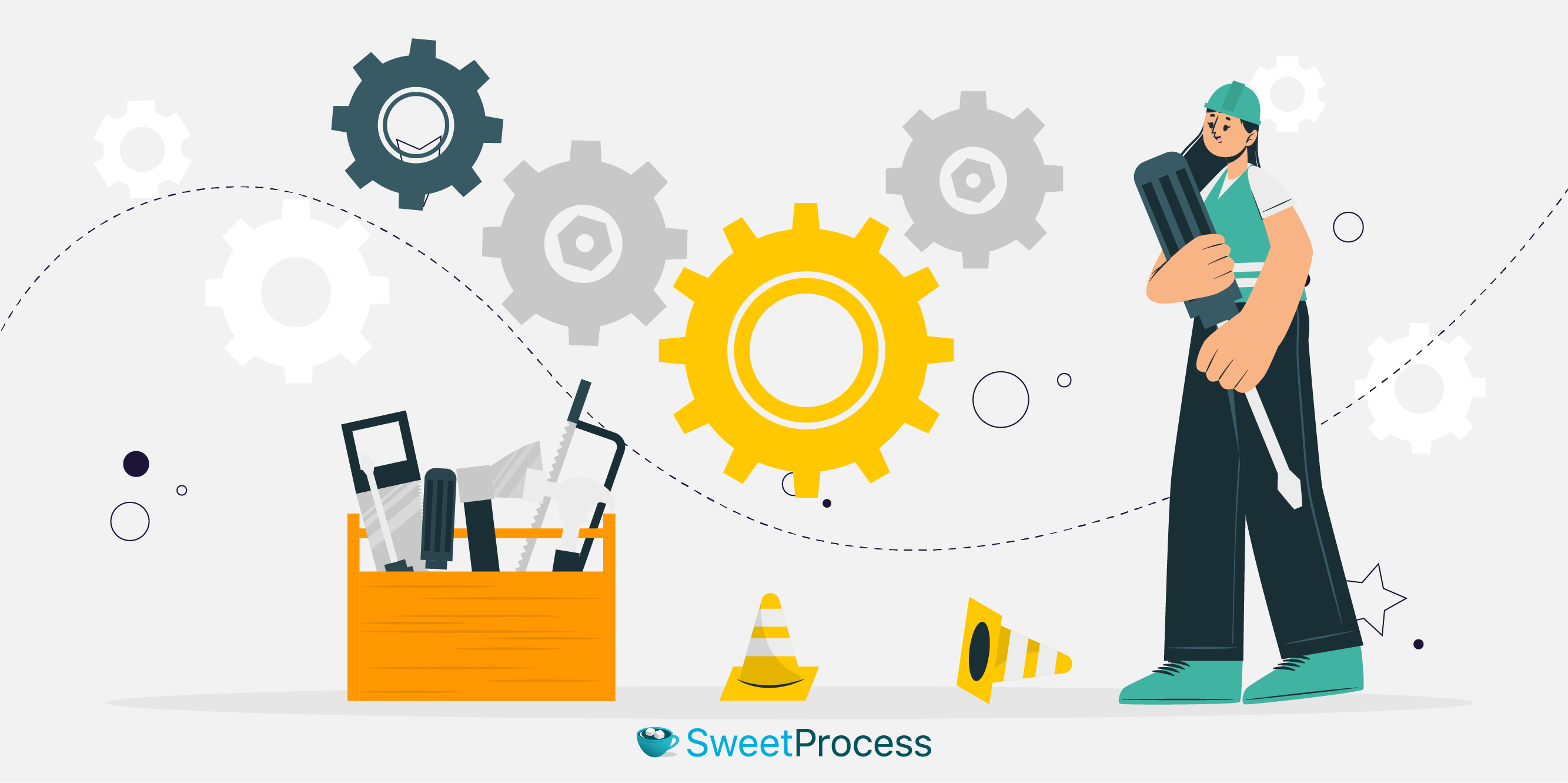
The outcomes of business decisions are too significant to be based on chance. Showcasing good judgment continuously enhances an organization’s reputation and builds trust among customers. Decision-making tools enable businesses to approach decisions systematically for repetitive success. The top business decision-making tools include the following:
Decision Matrix
A decision matrix is a table with various columns containing the alternatives in a decision and their various attributes. It enables you to view all aspects of the alternatives and compare them side-by-side to determine the best choice. There’s room to outline essential criteria for the decision, and then weigh the alternatives’ attributes against the criteria to see which one meets your needs the most.
SWOT Analysis
SWOT Analysis – an acronym for strengths, weaknesses, opportunities, and threats, is a tool for evaluating the different components of an idea for implementation. It helps in strategic planning by identifying the good and bad aspects of a decision ahead of time. An advantage of a SWOT analysis is the consideration of the internal and external factors of the decision. Factoring the results of your analysis into your plan gives your business a competitive edge.
Pros and Cons List
A pros and cons list contains the advantages and disadvantages of the alternatives in a business decision. Every decision has its negatives, but it becomes problematic if they outweigh the positives. Creating a pros and cons list helps compare both aspects so you can lean on alternatives with more pros. This tool is easier to adopt when dealing with a few decision alternatives.
Cost-Benefit Analysis
A cost-benefit analysis compares the benefits of a decision with its associated costs. It saves businesses the trouble of making decisions without considering underlying expenses. Alternative A may have bigger benefits than alternative B, but when you compare both benefits against their associated costs, alternative B may be better. It offers a holistic approach to decision-making, outlining the ripple effects of all alternatives.
Pareto Analysis
Pareto analysis is a business decision making tool for prioritizing the most important aspects of a decision and saving costs. Built on an 80/20 rule, it states that you can achieve 80% of your desired results by doing 20% of its associated work. Similarly, you can solve 80% of a problem by identifying 20% of its causes. Assign a score to each attribute of an alternative and then focus on the ones with the highest scores because they are most significant to the decision.
Six Thinking Hats
Six thinking hats are a decision-making tool for examining problems from multiple perspectives. The hats which are in different colors represent how to approach a problem based on your position.
- Blue Hat: The blue hat is the team leader or manager. They coordinate the decision-making process, and it’s their responsibility to understand the requirements of the decision and communicate them to other team members.
- White Hat: The white hat is data-driven and plays a significant role at the beginning of a decision-making session to ensure that valuable information has been gathered and vetted to be factual as incorrect information will produce invalid results. It’s also essential at the end of a decision-making session to evaluate information contributed by other hats.
- Green Hat: The green hat opens the floor for innovative thinking and contributions. It thinks outside the box and introduces ideas that others may overlook. Other hats may not be comfortable with the green hat’s perspective, but they must be open to it.
- Yellow Hat: The yellow hat encourages the ideas of the green hat by highlighting their pros. The bearer plays a significant role in ensuring that other team members don’t shut down any good ideas generated by the green hat without proper consideration.
- Red Hat: The red hat identifies the cons of any ideas the team discusses. They play the devil’s advocate by highlighting the reasons why certain opinions may not fly. Their point of view isn’t based on facts but on instincts.
- Black Hat: The black hat is similar to the red hat; the difference is that they argue with facts. They examine each idea critically, focusing on their loopholes, and then present objective reasons why the loopholes exist.
Decision-Making Process in Business
The decision-making process in business relies on evidence to prioritize an alternative over others. It’s becoming more complex due to rising external market factors outside organizations’ jurisdictions. Neglecting any significant attribute impacts the validity of your decision and ultimately leads to failure.
Businesses must incorporate these factors to enhance the impact of their decisions.
Data Collection and Analytics
Collecting and analyzing data for making business decisions eradicates assumptions—people assume things when there’s no relevant information on the ground. The data collected must be analyzed to derive meaning and direction. A data-driven business decision minimizes failure rate to the barest minimum due to insights from avoiding unfavorable conditions.
Connectivity
A single business decision has a ripple effect across the entire organization. Executives need to consider how an alternative impacts the various areas of their organization. This entails liaising with various parties at different levels in the decision-making process to arrive at an alternative that suits all bodies.
Contextualization
Situations requiring business decisions are different. Adopting a one-size-fits-all approach causes incompatibility. An alternative must be contextualized to suit the problem it’s meant to resolve; otherwise, it may have surface-level results.
Continuity
Decision-making in business is continuous. Organizations need to be proactive in projecting favorable outcomes by identifying models and tools they can implement when situations arise. This absorbs the confusion from being taken unawares, allowing them to act swiftly.
Decision-Making Process in Consumer Behavior

The consumer decision-making process explains how an average consumer evaluates a purchasing decision. Understanding this process helps businesses to position themselves well for positive outcomes as consumers engage with them through the buying process.
The five stages in the consumer decision-making process are:
Recognizing a Need
Need recognition is a point where a consumer becomes aware that they need a product or service. This awareness usually stems from a lack or deficiency in an area of their life. The consumer is convinced that they truly need an item from the perceived value it will offer them. Need recognition is an internal stimulus for the consumer, but as a business, you can leverage this stage by putting your product or service out there so it’s visible to the consumer once they become aware of the need.
Searching for Information
Having acknowledged that they need a product or service, the consumer seeks more information about it. They start by recalling experiences they may have had with the item and ask themselves if those experiences were good or bad. If they have no previous encounter with the item or aren’t satisfied with it, they search for information about it online. Customer reviews, blog posts, and contributions on online forums are some of the sources of their information.
Businesses can benefit from the information search in the consumer decision making process by creating brand awareness. This includes creating and publishing content about their products and services on their websites and other targeted platforms. Create avenues for customers to write reviews about your products and showcase the positive ones in your content.
Evaluating Alternatives
A consumer in this stage of the decision-making process knows what they want in a product. To get the best product on the market, they evaluate multiple alternatives, comparing each against established criteria. Factors the consumer considers in their evaluation include price, benefits, quality, and more.
The information organizations have out there about their products or services is what the consumer uses in evaluating their alternatives. Ensure that you provide adequate information about your offering in your content to convince a prospective buyer that you are the best alternative. Create a frequently asked questions (FAQs) page on your website addressing possible questions customers may ask.
Making a Purchase Decision
Having examined all the alternatives based on the information available to them, the consumer makes a buying decision. An average consumer seeks the best alternative—it’s your responsibility to make your product or service appear its best to them. If you are intentional about gaining their favor from the first stage of the consumer buying decision-making process, your chances of success are higher in this stage.
Post-Purchase Evaluation
The last phase of a consumer decision-making process could facilitate future patronage and it could also be the last time they patronize your business. A customer who is satisfied with your product or service may leave positive reviews about it online which would encourage others to patronize you; they may even patronize you again. The reverse is the case if the customer is unsatisfied with your offering—they may leave negative reviews and never patronize you again.
As a business, you must ensure that claims about your products or services are true. This requires putting in the work to create products and services that offer significant value to users. A handful of reviews from unsatisfied customers could have damaging impacts on your brand’s reputation.
Decision-Making Process in Healthcare

Healthcare providers are mandated to make decisions regarding patients’ well-being every day, and these decisions have either good or bad consequences. Most healthcare decisions are either directly or indirectly about life and death. Medical practitioners must approach such decisions with caution even when they have limited time.
The dynamics of healthcare decision-making vary in various locations, but practitioners share a common goal of giving patients the best outcomes at the time and advancing the healthcare system.
Critical evaluation is non-negotiable in healthcare decision-making because the slightest errors could lead to the immediate death of patients and the death of more people in the long run due to poor healthcare policies.
The decision tree is common among medical practitioners, especially in urgent matters of life and death. They must decide on their next steps in a limited time while ensuring they make the best decision. The branches of the tree represent the alternatives and the leaves represent the outcomes of each alternative. They develop the leaves of the branches to see the benefits, limitations, and results of all alternatives on the tree. They compare all factors to identify an alternative that has the best outcome with the least risks.
Decision-Making Process in Project Management
Decision-making in project management seeks the most efficient means for achieving maximum results. Some projects are more complex than others, making it ineffective to approach all projects in the same manner. Establishing standards for measuring time, budget, and other factors enables you to give each project the attention it deserves in the decision-making process.
In addition to the decision-making models already discussed, project managers can adopt other techniques like brainstorming and elimination by aspects.
Brainstorming allows team members to generate ideas and deliberate on them collectively. Everyone understands the goal at hand and tasks themselves to develop a means to achieve it. Brainstorming encourages innovative thinking. All ideas are welcome—it’s the responsibility of the group to make meaning out of them. By the end of the brainstorming session, the team will have a consensus on the best alternative for the decision.
Elimination by aspects is a process of outlining all the alternatives in a decision and evaluating them based on established criteria. You weigh the options on the criteria scale and remove the lightest ones until you arrive at the heaviest alternative. It’s a good decision making technique in project management for saving time and resources.
Types of Biases That Come Up in the Decision-Making Process (And How to Avoid Them)
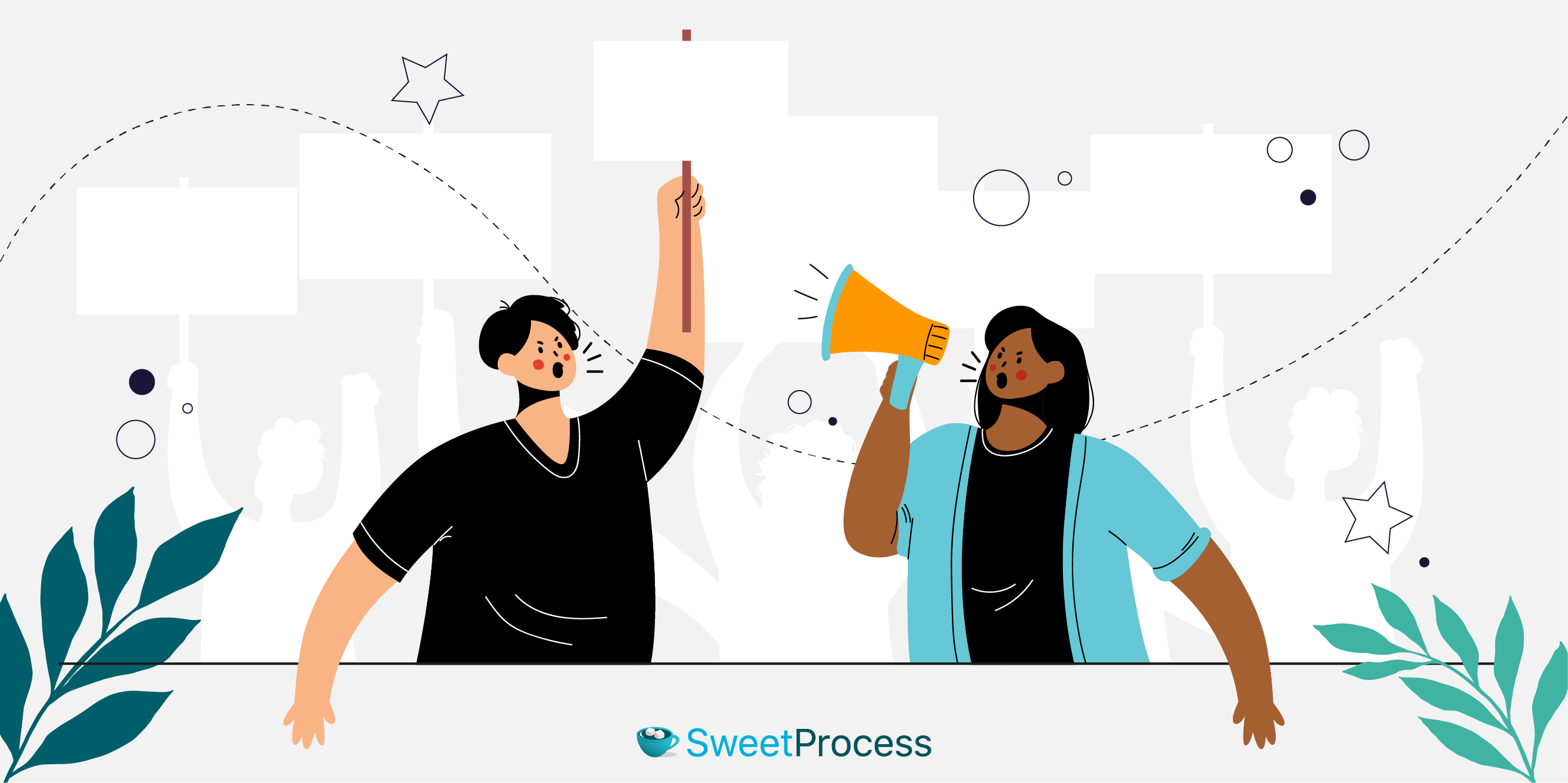
Making too many decisions causes fatigue. Our brains try to protect us by erecting mental barriers called biases to prevent us from evaluating decisions thoroughly and prompt us to take the easiest routes to choosing an alternative.
Decision-making biases can be good or bad, depending on the situation. One of the qualities of a good leader is being able to recognize how they impact the decision-making process.
Confirmation Bias
Confirmation bias is subconsciously leaning toward ideas and alternatives that align with your preconceived beliefs when making decisions. Your brain seeks and develops familiar information, neglecting information that counters what it already knows or feels comfortable with. This could make you ignore important factors in your decisions.
Self-Serving Bias
Self-serving bias is the influence of personal interests in decision-making. People gravitate toward alternatives that boost their self-esteem or flatter them without even realizing it. The outcome of such a decision may not be entirely bad because they score some points for the decision makers, but it isn’t in the best interest of the organization.
Halo Effect
The halo effect is about building an impression from a single aspect of a subject and viewing all other aspects of it based on that impression. It’s the presumption that the whole of a thing is good because an aspect of it is good, and vice versa. This bias emphasizes the first impression people have about an alternative. It can be misleading in decision-making because other aspects of the chosen alternative may be bad.
Herd Mentality
The herd mentality is a decision-making bias where people follow the crowd without evaluating a situation to see if it’s good for them. There’s the assumption that the most popular alternative is the best just because the majority of people say so. This bias is common in business environments where people aren’t encouraged to air their personal views. Business leaders must kick against having a consensus too early in the decision-making process and be intentional about giving everyone a chance to share their opinions. One way to resist the halo effect is to remember that people naturally take the easiest route instead of putting in the work to get better results.
Sunk-Cost Fallacy
The sunk-cost fallacy bias is the resilience to continue with an endeavor because of the resources invested into it, even when the current costs are more than the benefits. For instance, you started a project with what seemed like a great plan and invested time, money, and other resources in it. A considerable time has passed, and you aren’t seeing any significant results. Rising developments show that your plan isn’t so effective, but you insist on continuing with it because you don’t want to lose your investments.
Business climate changes, making great ideas inefficient. You need to be in tune with reality to recognize when to make a U-turn despite your investments, otherwise you will incur more losses.
Empower Your Employees to Make the Right Business Decisions Using SweetProcess

Information is the core of every decision-making process. A chosen alternative is a result of the decision-maker’s judgment based on their evaluation of the information at hand. SweetProcess enables you to document your business processes and make them available to team members. Its reporting and business analytics feature informs you about how team members engage with ongoing projects. This is essential in building and managing your decision making team as you can gauge team members’ knowledge levels. Limit your chances of going bankrupt by signing up for a 14-day free trial. No credit is required; you have no obligation if you choose to walk away at the end of the trial.




